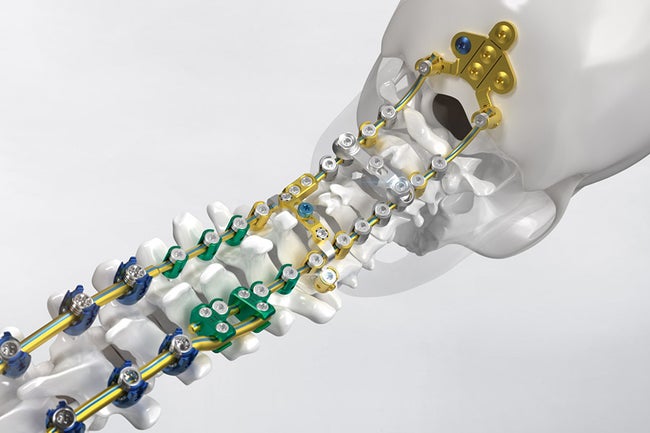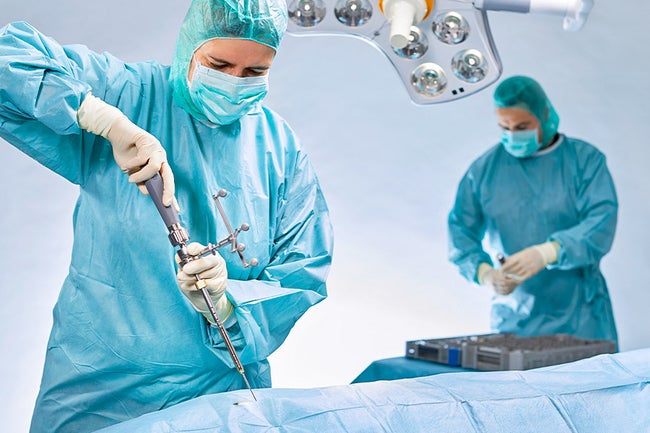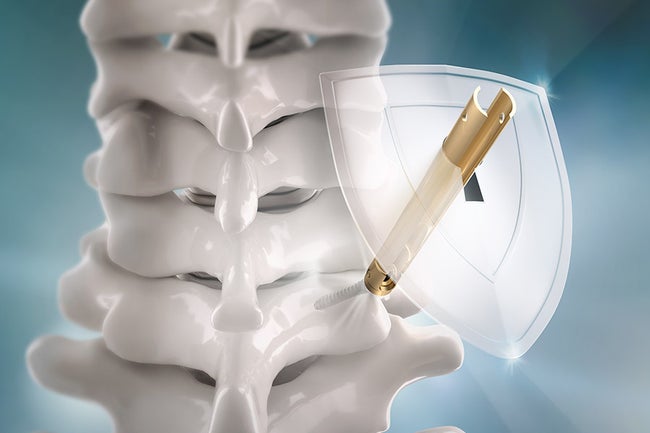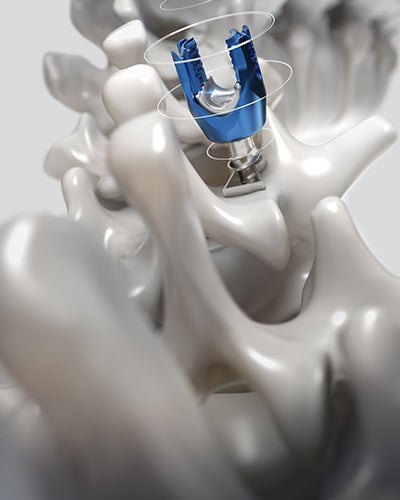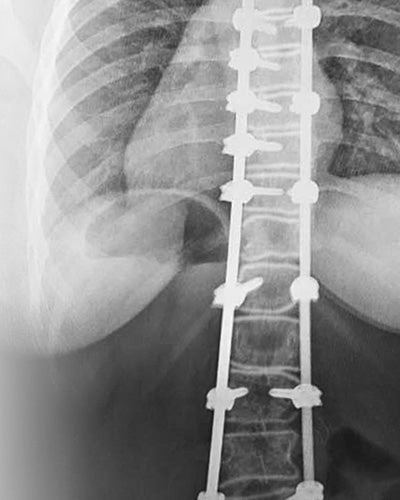Ennovate® Cervical
Ennovate® Cervical – Solutions beyond fusion
Your passion and precision deserve our appreciation
In continuous dialogue with surgeons B. Braun developed a comprehensive system platform enabling a highly efficient and intuitive handling of lumbar, thoracic and cervical spine surgery: Ennovate®.
Ennovate® combines next generation implants and instruments with lean process workflows and provides smart solutions for the implantation of spinal implants.
With Ennovate® Cervical B. Braun provides innovative, intuitive and high-precision instruments and implants for the cervical and upper thoracic spine. Especially in complex cases we support your professionalism and expertise with state-of-the-art tools.
It has never been easier
Together with surgeons we worked on the improvement of instruments and surgical techniques: Ennovate® Cervical offers surgeons the possibility to achieve optimal surgical outcomes in the occipital, atlantoaxial and subaxial region. With our comprehensive spinal system, we aim to offer the full range of possibilities – not only with additional navigation, but also for future-oriented technologies like the MIS approach.
Smarter than the sum of its parts: The system offers dedicated occipital instruments allowing access and implantation even in difficult circumstances as well as a special C1/C2 all-in-one instrumentation facilitating screw placement in the atlantoaxial region. Finally, with its broad variety of connectors the Ennovate® Cervical system connects all parts forming one system platform.
Because your best surgical outcome is our aim.
Minimal intervention. Enhanced protection.
Posterior cervical stabilization requires a large midline incision including stripping of the paraspinal muscles causing soft-tissue trauma and significant post-operative neck pain.
Similar to minimally invasive stabilization of the thoracolumbar spine, which have been proposed to reduce access-related morbidity such as muscular denervation, atrophy, length of hospital stay, blood loss and post-operative pain [1-4] procedures for posterior cervical instrumentation represent the next logical step. Several pioneers already reported minimally invasive posterior procedures for stabilization of the cervical spine. [5-9]
The MIS module of the Ennovate® Cervical system offers dedicated navigation ready instruments and implants allowing for a less invasive approach to the cervical spine with the goal to reduce access related morbidity such as post-operative pain in the cervical spine.
The Ennovate® Cervical MIS instrumentation offers a choice between the streamlined and extended surgical technique, allowing a less invasive approach to the cervical spine. The streamlined version is characterized by its ease of use whereas, the extended version offers enhanced control of the screw entry point.
[1] Kim D-Y, Lee S-H, Chung SK, Lee H-Y. Comparison of multifidus muscle atrophy and trunk extension muscle strength: percutaneous versus open pedicle screw fixation. Spine (Phila Pa 1976). 2005;30(1):123-9.
[2] Ringel F, Stoffel M, Stüer C, Meyer B. Minimally invasive transmuscular pedicle screw fixation of the thoracic and lumbar spine. Neurosurgery. 2006; 59(4 Suppl 2):ONS361-6; discussion ONS366-7.
[3] Lee S-H, Choi W-G, Lim S-R, Kang H-Y, Shin S-W. Minimally invasive anterior lumbar interbody fusion followed by percutaneous pedicle screw fixation for isthmic spondylolisthesis. Spine J. 2004;4(6):644-9.
[4] Sun X-Y, Zhang X-N, Hai Y. Percutaneous versus traditional and paraspinal posterior open approaches for treatment of thoracolumbar fractures without neurologic deficit: a meta-analysis. Eur Spine J 2017; 26(5):1418–31.
[5] Fong S, Duplessis S. Minimally invasive lateral mass plating in the treatment of posterior cervical trauma: surgical technique. J Spinal Disord Tech. 2005;18(3):224-8.
[6] Holly LT, Foley KT. Percutaneous placement of posterior cervical screws using three-dimensional fluoroscopy. Spine (Phila Pa 1976). 2006; 31(5):536-40; discussion 541.
[7] Scheufler K-M, Kirsch E. Percutaneous multilevel decompressive laminectomy, foraminotomy, and instrumented fusion for cervical spondylotic radiculopathy and myelopathy: assessment of feasibility and surgical technique. J Neurosurg Spine. 2007; 7(5):514-20.
[8] Thongtrangan I, Le H, Park J, Kim DH. Minimally invasive spinal surgery: a historical perspective. Neurosurg Focus. 2004;16(1):E13.
[9] Wang MY, Levi ADO. Minimally invasive lateral mass screw fixation in the cervical spine: initial clinical experience with longterm follow-up. Neurosurgery. 2006;58(5):907-12; discussion 907-12.
